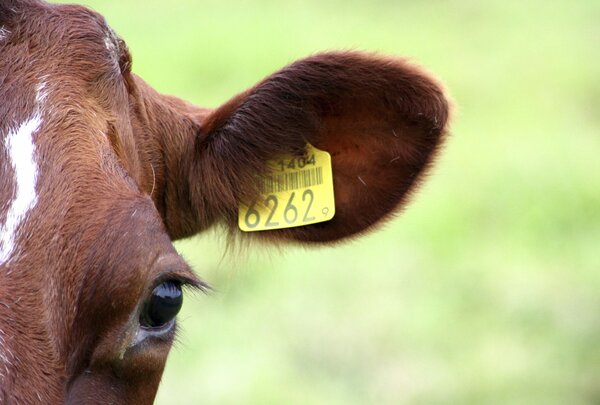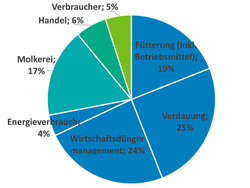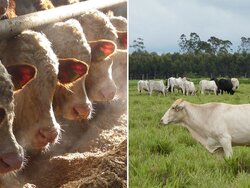Dossier
Climate protection in livestock farming
Katrin Agethen | 19.01.2023
Reducing greenhouse gas emissions in livestock farming is a small-scale task. We analyse starting points and potentials for reduction and evaluate the economic impacts beyond Germany.

In Germany, livestock farming contributes to about one third of emissions from agriculture and land use. Although ruminants are quickly identified as the main source of emissions, the specific assessment of mitigation measures is complex. Capturing the heterogeneity of production methods in dairy and beef production and the practice of farms is challenging, and estimating the effects and costs of various mitigation measures is farm (type) specific.
Of the 11 million cattle kept in Germany, 3.8 million are dairy cows. Together with the other cattle attributable to milk production, such as the female offspring, they account for more than 50 % of the GHG emissions from livestock farming. Dairy farms in Germany differ significantly in terms of farm size, dairy breed and performance level, with different impacts on GHG emissions per farm, cow and kilogram of milk produced.
In the production of beef, Germany plays only a small role internationally. A comparison of the different production systems worldwide shows clear differences in greenhouse gas mitigation potentials and costs. Therefore, our analyses extend beyond Germany to the most important production countries worldwide.
For competent policy advice on efficient climate protection in livestock farming, we also contribute our expertise and infrastructure to global networks: In the agri benchmark network Beef and Sheep, coordinated by the Thünen Institute of Farm Economics, research partners are increasingly participating in joint analyses on climate-friendly production processes; in the Global Research Alliance on Agricultural Greenhouse Gases (GRA) we are leading a flagship project on the economics of greenhouse gas mitigation at farm level in cattle production systems.








